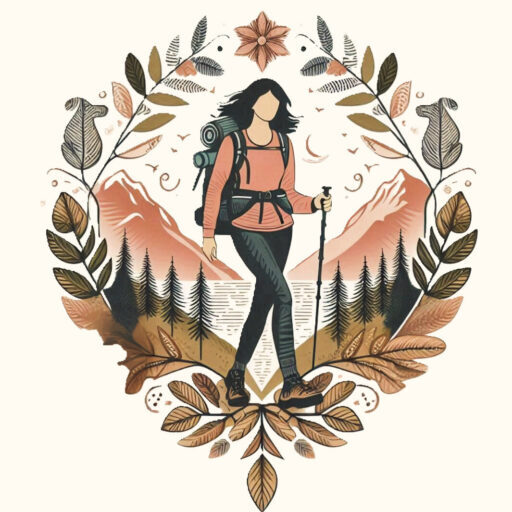Trail Etiquette: Do’s And Don’ts
Trail etiquette is like the unwritten rulebook of hiking. It’s essential for keeping things smooth, safe, and fun out there. Without it, trails could quickly turn chaotic and even dangerous. Plus, it’s key to making sure everyone – people, plants, and animals – can share the space harmoniously.
Let’s break down why trail etiquette matters. First off, it helps preserve nature. When you stick to the path and follow ‘Leave No Trace’ principles, you’re doing your bit to protect the environment. That means no trampling on delicate vegetation, avoiding erosion by staying on marked trails, and not disturbing wildlife habitats. Every little bit helps keep these beautiful places intact for future hikers.
There’s also a huge safety component. Think about it: when everyone knows to yield to uphill hikers or give each other space, it reduces accidents. The trail isn’t a racecourse; it’s about enjoying the journey, safely. Observing these small acts of courtesy can make a big difference in preventing collisions and ensuring everyone’s well-being.
Respect among hikers is another big reason for practicing good trail etiquette. No one wants their peaceful hike disrupted by loud music or massive groups hogging the path. Keeping your noise levels down and being mindful of others helps everyone enjoy their outdoor experience. It’s all about mutual respect.
Lastly, following trail etiquette fosters a sense of community. When everyone does their part, it creates a positive atmosphere where hikers feel connected and responsible for each other and the environment. It’s like being part of a club where everyone values and protects the trails we all love.
Preserving Nature: Minimizing Environmental Impact
Staying on designated trails is rule number one. Wandering off the marked path may seem harmless, but it often leads to erosion and damages fragile vegetation. Plus, creating new trails can disturb the habitats of wildlife that call the area home.
‘Leave No Trace’ principles are your best friend out there. It’s all about leaving the trail as beautiful as you found it, if not better. This means packing out all your trash, not picking flowers or plants, and taking care not to disturb any wildlife.
Avoiding shortcuts is another crucial part of preserving nature. It might be tempting to cut through switchbacks or create a new path, but this can cause trail widening and serious erosion over time. Stick to the trail, even if it means a slightly longer hike.
By adhering to these practices, you’re playing a vital role in keeping natural spaces pristine and beautiful. It’s about respecting the land and wildlife, ensuring future generations can enjoy the same trails and sights.
Ensuring Safety: Shared Trail Practices
Yielding rules are essential for keeping things safe on busy trails. Generally, uphill hikers have the right of way. It’s way easier for downhill hikers to pause and step aside. That uphill momentum is crucial, so give them a break by letting them pass.
Keeping a safe distance between you and other hikers is another must. It’s just like driving – tailgating on a trail is a no-go. Whether you’re walking, running, or biking, respecting personal space helps avoid accidents. Slow down, give a friendly heads-up when passing, and make sure there’s enough room for everyone.
Signaling before passing is key. A simple ‘On your left!’ works wonders to prevent surprises and bumps on narrow trails. It’s courteous and safety-conscious. When you give a heads-up, it helps manage traffic and keeps everyone aware of each other.
Handling emergencies on a trail can be tricky. Always carry a basic first-aid kit and a charged phone for emergencies, but remember, signals can be spotty. Know a few basic first-aid measures too – a little knowledge goes a long way if something goes wrong.
Safety is everyone’s responsibility. By taking these simple steps, you contribute to a safer hiking environment for yourself and others. It creates a more enjoyable experience and helps ensure that everyone can share the trail harmoniously.
Respecting Fellow Hikers: Maintaining Harmony
Managing noise levels is a biggie. Nobody wants to hear someone else’s music blasting through the forest. If you love hiking with tunes, use headphones. It keeps the vibe serene for everyone. If talking in a group, keep voices at a moderate level, respecting the quiet nature of the outdoors.
Keeping group sizes manageable also helps. While hiking with pals is fun, huge groups can clog up the trail. If you’re part of a larger group, break into smaller ones, allowing others to pass easily and not feel overwhelmed.
Using trailheads and rest stops thoughtfully ensures everyone has a good experience. These spots can get crowded, so be quick and considerate. Don’t hog these areas, and always be aware of others waiting to use them.
Be ready to lend a hand if someone’s in need, but also respect their space. A friendly smile or hello goes a long way in building a positive hiking community. Remember, the trail is a shared space, and kindness should be your default mode.
Managing Trail Traffic: Efficient Movement
Staying to the right and passing on the left keeps things flowing smoothly. It’s kind of like driving – everyone knows where they’re supposed to be. If you need to pass someone, give a polite heads-up, such as saying, ‘On your left!’
Single file hiking on narrow trails is a game-changer. When pathways get tight, walking single file lets others pass without any gymnastics. It’s also safer and less disruptive to the trail itself.
Communicating with other hikers is key. A little eye contact and a smile can do wonders. If you’re approaching someone from behind or need to get past, a friendly ‘Hello’ or ‘Do you mind if I pass?’ makes all the difference.
Handling congested trails takes a bit of patience. If the trail’s packed, take it slow. Pushing past others or getting frustrated just adds to the chaos. Enjoy the journey and appreciate the process, no matter the traffic.
Protecting Wildlife: Ethical Interaction
Keeping a safe distance from animals is crucial. While it might be tempting to get a closer look, it’s better for both you and the wildlife to observe from afar. Disturbing animals can stress them out and alter their natural behavior.
Feeding wildlife is a big no-no. It might seem harmless, but it can make animals dependent on human food, which is not good for their health or survival. Keep your snacks to yourself and let animals find their own food sources.
Observing animals from a distance gives you the chance to see their natural behavior. Use binoculars or a camera with a good zoom if you want a closer look. This way, you can enjoy the wildlife without interfering with their routine.
Understanding the impact of human interaction on wildlife is important. Regular disturbance can push animals out of their habitats or make them too accustomed to human presence, which can be dangerous for them. Respect their space and remember that you’re a guest in their home.
Responsible Pet Ownership: Hiking with Pets
Leashing pets and keeping them under control is crucial. Even the friendliest dogs can spook wildlife or other hikers. A leash helps keep your pet safe and prevents any unwanted interactions.
Cleaning up after pets is a must. Carry those waste bags and make sure to pick up after your furry friend. It’s all about maintaining the cleanliness of the trail for everyone to enjoy.
Ensuring pets do not disturb wildlife is another key point. Even if your dog is well-behaved, the scent alone can stress animals. Keep them close and avoid areas where wildlife is commonly seen.
Respecting leash laws and trail rules is non-negotiable. Not all trails allow pets, and some have specific requirements. Check the rules before you go and stick to them once you’re out there.
Minimizing Environmental Damage: Protecting Ecosystems
Avoiding damage to fragile ecosystems starts with your feet. Stick to marked trails and avoid trampling on plants. Even a slight deviation can cause significant harm to the environment.
Protecting plant life and water sources is a key part of trail etiquette. Don’t pick flowers or disturb natural water sources. Admire that wildflower patch from a distance and let streams flow undisturbed.
Using designated areas for camping and rest keeps the wilderness wild. Set up tent in established campsites and stop for breaks in cleared spots. This helps protect delicate areas that can’t handle too much foot traffic.
Understanding the importance of marked trails is fundamental. Those paths are there for a reason – they guide you through areas that can withstand human impact while protecting those that can’t. Follow them and contribute to preservation efforts.
Fostering Community: Creating a Positive Hiking Culture
Creating a positive atmosphere on the trail starts with small acts of kindness. A simple smile, greeting fellow hikers with a friendly ‘hello,’ and offering help when needed contribute to a welcoming environment for everyone.
Sharing knowledge about good trail practices can make a big difference. If you see someone unknowingly doing something harmful, kindly educate them. It’s not about reprimanding but about spreading awareness and fostering good habits.
Participating in trail maintenance and clean-up is a great way to give back. Join a local hiking club or volunteer for trail workdays. It’s a way to ensure the trails you love remain in great condition and accessible for all.
Encouraging proper etiquette among your hiking group helps maintain a positive experience for everyone. Lead by example and remind others to respect the trail and fellow hikers. This builds a sense of responsibility and camaraderie.
Ensuring trails remain safe, beautiful, and accessible for everyone is the ultimate goal. By practicing and promoting good trail etiquette, you help preserve these natural spaces and create a community of respectful and thoughtful hikers.


Leave a Reply